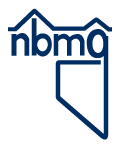Water Contamination
Water can become contaminated from both natural and artificial sources. Natural sources can include generally mineralized areas that have naturally elevated concentrations of elements such as arsenic, copper, lead, sulfur, and more. These are leached from the rock under certain con ditions and become concentrated in the water supply. Such element may not even have to be from a concentrated source, but under the right conditions can still be leached and concentrated in the water supply. Alkali and salts are also commonly leached from rocks and soil and concentrated in the water supply in some areas. The whitish crusts commonly seen in and near playas is alkali and salts left behind from the evaporation of surface water containing these substances. Artificial sources of contamination, of course, include improperly disposed of sewage and industrial and commercial wastes and runoff of agricultural wastes and fertilizer.
If you suspect water contamination, you should contact the Nevada State Health Laboratory on the University of Nevada, Reno campus at (775) 688-1335. NBMG has some reports on some aspects of water contamination. The USGS also has a number of general and site specific publications dealing with water contamination.

 Home
Home